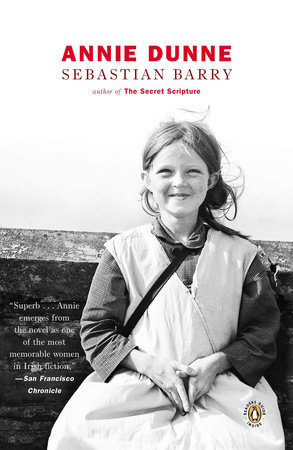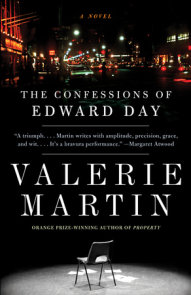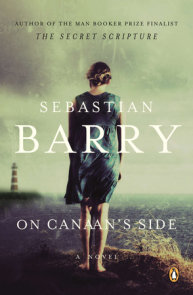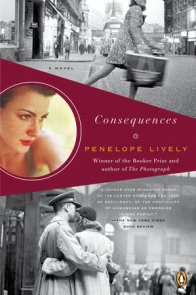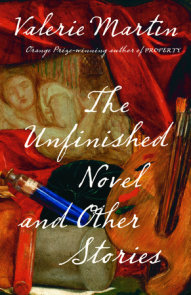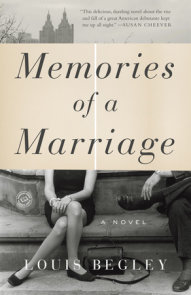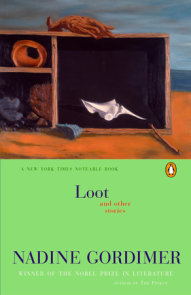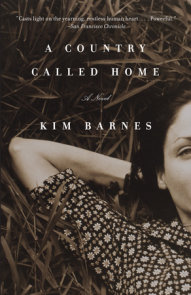READERS GUIDE
Questions and Topics for Discussion
INTRODUCTION
How does one hold on to a world that no longer exists? Playwright and novelist Sebastian Barry explores this question in a poignant and exquisitely told story of innocence, loss, and reconciliation. Set in a rural section of Ireland known as Kelsha, “a distant place, over the mountains from everywhere,” Annie Dunne tells the story of Annie and her cousin Sarah, aging unmarried women who live according to folkways that were already vanishing during the late 1950s when the novel takes place. Their great friendship is their most valuable possession, but Annie—hunchbacked and bitter over the way the rest of her family has treated her—lives in constant fear that it could be taken away. Quiet and intensely personal, Annie Dunne is both a story about and a meditation on the means by which we accommodate a world too big to understand. “Oh, what a mix of things the world is,” Annie reflects, “what a flood of cream, turning and turning in the butter churn of things, but that never comes to butter.”
One summer Annie’s grandniece and grandnephew come to stay with her and Sarah. That same summer, a local handyman, Billy Kerr, begins to court Sarah and becomes more of a presence in the two women’s lives. Through Annie’s eyes we see the rhythms of their rural life—drawing water from the well, slaughtering chickens, harnessing their one pony—as well as the ways the encroaching modern world, in the person of Billy, threatens to change it. We also see her guarded hope for a second chance, in the form of the children, to make peace with the new times. The old ways are revealed through Annie’s thoughts of her grandfather, a stern, “unseeing” man whose memory Annie reveres. But her grandfather’s work, as a policeman for the English, is a clue to Annie’s alienation from her proud Irish neighbors. As the novel—and Sarah’s relationship with Billy—develops, this seemingly simple rural tale unfolds into a historical and romantic drama, with lonely Annie Dunne at the center of a fast-changing world. Annie’s struggle to maintain the world just as it was highlights the book’s broader theme of the collision between history and individual lives that plays out in even the remotest corners of the globe.
Annie Dunne is at once a love story of the deepest bonds between friends and a tragedy of a woman—“one of the most memorable…in Irish fiction” (San Francisco Chronicle)—whose uncommon kindness is unacknowledged by the people she cares about the most. With Annie Dunne, Sebastian Barry achieves the rare balance of winning the reader’s sympathy for a character as bitter as the crab-apples she loves, prompting us to ask vital questions about the many disparities between how we see ourselves and how the world sees us—and what those differences can reveal about the loves that sustain us all.
ABOUT SEBASTIAN BARRY
Sebastian Barry is a playwright, novelist, and poet whose best-known play, The Steward of Christendom, has won numerous awards and garnered international acclaim. His novels include The Whereabouts of Eneas McNulty. Barry lives in Wicklow, Ireland, with his wife and three children.
A CONVERSATION WITH SEBASTIAN BARRY
How did you find the inspiration for the character of Annie Dunne? As a male writer did you find it challenging to “create” her? And as a male reader, who are some of your favorite female protagonists?
Twenty-five years ago the very first thing I wrote touched on Annie and her world, a world I had known myself as a small boy. It was only these years later, when I had children of my own, and having written both for the theater and the novel, that I tried the adventure of writing a story in her own words, her own particular language. The inspiration was a desire to draw her back in from the darks of history and time, so that this mirror or shadow of someone I as a child valued above all others might not be entirely lost. As a small child I loved the original Annie—I lived in her pocket, and in the pockets of her small cottage, so I felt at least I knew such a woman, like a spider perhaps “knows” the human room it abides in. Furthermore, to some extent, a person very like Annie “created” me in that I took my clue from her and have tried to live by her lights. A favorite female protagonist, as a male reader, would be perhaps Dorothea, the heroine of George Eliot’s Middlemarch.
Annie acknowledges her changing world and thinks she “do[es] not know where this Ireland is now.” Where is “this Ireland” now for you, and how might it differ from the one you knew as a child? How much of your own personal experience is woven into the narrative of Annie Dunne?
By an accident I have come back to live not far from Kelsha. I can see the mountain of Keadeen from my window. In some ways, nothing here has changed. In others, great barriers of darkness and not knowing close off the past. I don’t mourn the loss of Annie’s Ireland, a now strange and unrecoverable country, but she does. As I tried to write from inside her own mind, I wondered at her—how much of her grievances arise from a general sense of a sore journey, a life whose stray spark went unanswered and unnoticed. For myself, I felt a bitterness about Ireland when I started to write in the late 1970s. I thought it mean and unheroic. But a country, the idea of a country, may sometimes, as with Annie, be a picture, a simile, of a person’s disquiet, a person’s happiness or frugal grasp of it. I don’t in retrospect think I was immune from this. There are undoubtedly millions of Irelands, as many as there are individual Irish people. A change has occurred in Ireland these last years when unimaginable prosperity has descended upon the country, a change as absolute as the change in the late fifties from cart to car, that carried in new things and erased many old ones, including a certain intimacy of language and the destruction of certain distances, house to house, house to village, village to town, old webs that got swept away but on which particular thoughts and images depended.
With Annie Dunne, as well as your previous novel (The Whereabouts of Eneas McNulty), you manage to compress a lot of historical information into an otherwise fictional narrative. How did you approach these writing projects—with a desire to write about a specific historic event or an interest in a particular type of character?
At school I was reasonable at history but had a poor grasp of dates. At university I read Latin history and delighted in the comparative unimportance of fact, a tyranny that besets meaning, and the fullness and importance of style. One of my favorite Irish writers is the historian Roy Foster, for me the best prose stylist of my generation. Of course I could say that therefore, for me anyway, history has a fictional force, as does personal memory. Because both suffer from different modes of half fact, they acquire a battered truth, like old houses with the rot and insects teeming invisibly, assailed, but standing. Complicatedly enough, I don’t really believe in the recoverability of historic events, but I do in the floating paintings and interior poems that they leave in their wake, the afterlife of facts and events in the human mind. I am interested in these burrs and thorns that gather in the clothes of individuals as they make their way through a life. But my main desire has always been to recover someone from the blank of official history, where their stories can’t be written and, therefore, die away. I realize that in doing so in plays and novels, I have maligned them in the sense that I have fictionalized and made them up, though their origin may be in real people. So I have falsified them, often members of my own family, in order to perpetuate them. I am interested also not so much in a type of character, but in those individuals that stand in the memory, solitary and seemingly unimportant, against whom the years move like a black color to eradicate them.
Much of Annie Dunne’s difficulties stem from her loyalty to English rule. Is Annie Dunne implicitly a political novel?
Annie, like us all, has been in history, in her own portion of it, so, yes, it is a political novel in that sense. But Annie’s views are not my own. Annie’s view of history, and she was given a glimpse of official history at the beginning of the last century by the accident of being a policeman’s daughter, is based on her own prejudices. Mine is based on my prejudices! I grew up in a bohemian family—my mother was an actress and my father an architect and poet. My father especially I think thought history, politics, and to some extent even family, redundant and unimportant. I loved him, but I thought differently. I yearned for family but couldn’t reach it. Outside of that, one grandfather had been in the British army in the second war, the other was republican by nature and had played some part in the rising of 1916 that he never made clear to anyone. This was just things as they were, unexamined. Later when I started to write it began to seem quite strange, and I became interested really in unspoken things, family members who didn’t fit the bill of conventional Irishness. I married a Presbyterian woman by chance, and that was a further insight into the consequences of difference. Then you notice that the erased history might imply tracts of yourself were simply missing, crossed out. So when I had children, how was I to tell them who they were? I suppose Annie Dunne is part of this, the sorting out of people from history maybe, rather than in history.
There has been an increasing amount of interest in modern Irish literature in recent years. Frank McCourt, Roddy Doyle, Nuala O’Faolain—what is your concept of the “Irish writer”? Are you influenced mainly by Irish writers or do you look elsewhere for inspiration?
My heavens—the Irish writer. When I was starting to write you would go into a bookshop in Dublin, in Ireland, and there would be a dark section down the back of the shop, where you might find books by Irish writers. It was a kind of benign separatism in the minds of booksellers. But it seemed to imply that the real books were all the other ones that occupied the main shelves of the shop. Of course, all that has changed, and the lines and lines of Irish books are to be found just inside the doors—still separated off, now I think of it. Well, I don’t know what an Irish writer is. Am I one? I wonder does any one of us survive any of the adjectives given us. Can a writer wax and wane in Irishness? Can he or she deny it, like Shaw tried to do, and Swift? The current success of Irish writers, of course may—like that other story of successes, history itself—hide and obscure, under its lights and processions, some of the grander reading experiences that cause no rumpus, especially among the poets. Or it may lead the adventurous into the byways. When I was in my twenties and living around Europe, I carried with me the Shorter Poems of Ezra Pound and other books, but I do not think I carried Irish ones, perhaps to my shame. But I sat in the Luxembourg Gardens and read the letters of Yeats and Joyce and wondered about them. There was a group of men there that played boule every lunchtime and every lunchtime I and a little man in a blue suit, possibly a tramp, certainly as poor as me, watched them. By the end of the summer he was playing with the rest, but I was still watching. Perhaps I wished more to be the tramp, an unpromising individual accepted into a motley group, than Yeats or Joyce. But that may be one definition of an Irish writer. I read Latin and English at university. Virgil, Tacitus, Plautus, Propertius, Catullus, Boswell, Herrick, Brontë, Trollope, Conrad—very useful in realizing that there is really nothing that new under the sun in literature. What seems important is for things to be noticed anew, as if they were new, as a child might do.
As both a novelist and a playwright, do you find yourself treating your native Ireland alternatively as a landscape and a character? For instance, at one point Annie muses over “the broadening cheer of light when [she] walk[s] out into the morning yard.” Then, as the description continues, the grass itself “becomes bright and separate, like a wild claw…shouting with green, the lighting in life.” Can you tell us a few words about the use of personification in Annie Dunne?
The personification of Ireland of course is an old tradition, and indeed the old woman, or “the hag” as the term went, often stood for Ireland in poetry, even as late as Yeats. But I don’t think I was after such a thing. Ireland as a landscape and a character…that’s an interesting notion. I don’t really know the answer. Sometimes, either in accusation or praise, it is said that I write poetically, but the truth seems to me to be that I listen for how the characters speak and try to be faithful to that, wherever it leads. Robert Frost said that dangerous thing: that he looked after the sound and let the sense look after itself. I suppose as a child I could make no distinction between inert matter and things with a beating heart and have held on to that ignorance. After all it is the apprehension of a person of their surroundings that makes up the material, the banner and the inner pictures of a life. Annie lives in a rich world, in the sense that it has daily sights to see that she approves. Such I suppose is the wealth of people that have few coins, the coinage of things as they are, as they show themselves, like those small animals that are familiar to country people but are like revelations, revenants and miracles to city people, or used to be.
You said that The Whereabouts of Eneas McNulty began as a play that slowly took shape as a novel. What was the genesis of Annie Dunne? What are you working on now—and in which genre are you writing?
I did think of Annie Dunne as a play, but in fact I had already written it in a sense, my first play being about two brothers living on a small farm, Boss Grady’s Boys, in 1988. Then there was that story begun twenty-five years ago, in the voice of the little boy. But that wasn’t the right way to do it. Kelsha has lain behind a number of other books and plays, especially The Steward of Christendom, where Annie herself appears as a young woman. A book may have a reason more than a genesis, and the desire to write Annie Dunne finally came out of a time a few years ago when a great friend died and a brother fell ill, and I wished, I think, inasmuch as one knows these things, to recapture something of a haven, a place where there was a measure of nurture, even of family, though entirely temporary and erased. Where the soul of the one and the spirit of the other would find rest. Of course a book cannot do these things. But I felt that Annie was my only accomplice in the effort, and though she was distrusted and even disliked by adults in general, yet she, or at least the woman I had in mind and have carried in mind all my life, could love a child, and practiced that love faithfully and without stint when her brief time was given her. At the minute I am just beginning a book set during the First World War. Oddly enough, it is about Annie’s brother Willie, who died in Flanders. It’s a long way back to go—wish me luck. And good luck to you!
DISCUSSION QUESTIONS







